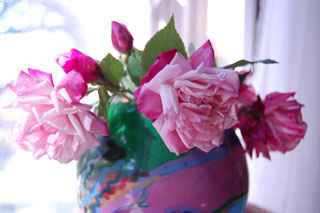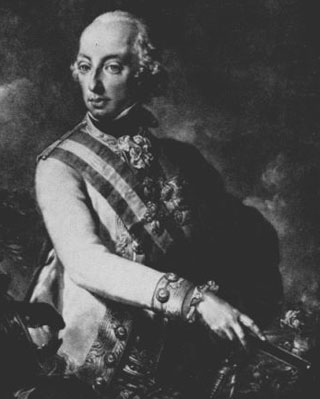Human Flower Project
Friday, December 01, 2006
Archduke Charles: December’s General
A china rose greets first frost militarily: “Bring it on!”

Archduke Charles, china roses, 11/30/06
Photo: Julie Ardery
They warned of 24 degrees last night, so we mulched, wrapped the Mexican palm, threw a sheet over the brugmansia and cut most of the flowers. We shouldn’t have panicked, at least about the roses.
Most of the roses in bloom here are an old china variety, called Archduke Charles. Somehow it survives our July and August, and with a little supplemental watering in November can greet Advent in full bloom. Even after last night’s cold snap, we see a neighbor’s old shrub today still covered with juicy buds and flowers. It came through the night just fine.
We first learned about this wonderful plant from Morton King of Georgetown, Texas. Morton told us that up his way, it’s known as “The Sam Houston Rose” since, it’s said, that Houston’s daughter Nannie introduced the plant when she moved here after marrying local store-owner Joseph Morrow. “She brought a cutting from her Mother’s garden in Huntsville and of course all the little old ladies around town wanted a Sam Houston rose,” says Morton.
The Kings moved to Georgetown, about 25 miles north of Austin, in the late 1970s and set about restoring a beautiful old house there. Unwittingly, “they poured the porch over the Sam Houston Rose,” he says. “We didn’t know what it was. Just an old rose bush.
“The daughter-in-law of a former resident showed an interest in the property and came by and met us and talked with us, and was looking around the yard, and pointing out things and said, ‘Now where is the Sam Houston rose?’ And she said ‘It used to be right here.’”
Listening to their sheepish story, she took pity on the Kings. “She said ‘Hmmm, we took some cuttings out to the fishing camp out on the (San Gabriel) River. It’s all grown up out there but maybe I could get some…’ So she went out in the country here somewhere and fought her way through bushes and brought us some cuttings, and that’s what we have now in different places in the yard,” Morton says, adding. “That’s how far people (in Georgetown) will go to be helpful to you with flowers.” Mr. King showed us photographs of blooms he’d cut as far into winter as Christmas Day.
By the way, this same plant is called The San Marcos Rose a little farther south, since it flourishes in that town, too, about 50 miles away.

Archduke Charles of Austria, Duke of Teschen (1771-1847)
Image: Napoleon Online
Austin sits just between Georgetown and San Marcos, putting us smack in the center of Archduke Charles’s reign. This beautiful flower buds deep pink, but opens with a white center. In bright sunlight the blooms turn red in time. Rosarian Thomas Rivers called it “a chameleon.” But perhaps the mutable feature is a reference, too, to Erzherzog Karl von Österreich, for whom it was named.
An Austrian prince, Archduke Charles trained for the military and first fought in the French Revolution. He handed Napoleon a huge defeat at the Battle of Aspern-Essling (1809). But after this victory, though his popular esteem continued to grow, the Archduke was not so successful on the battlefield. One military historian writes, “Again and again he repeats the advice that nothing should be hazarded unless one’s army is completely secure, a rule which he himself neglected with such brilliant results in 1796. Strategic points, he says, not the defeat of the enemy’s army, decide the fate of one’s own country, and must constantly remain the general’s main concern, a maxim which was never more remarkably disproved than in the war of 1809.”
Talking prudence but winning with daring, it appears that Archduke Charles, the general, was a chameleon too.




